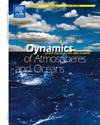利用深度学习模式及多普勒天气雷达观测预测印度南部雷暴演变
IF 2
4区 地球科学
Q2 GEOCHEMISTRY & GEOPHYSICS
引用次数: 0
摘要
雷暴是造成暴雨和闪电的恶劣天气现象,对农业、基础设施和一般生活构成严重威胁。这些事件的短尺度性质使其难以预测。在这项研究中,我们首次尝试在印度地区使用深度学习(DL)模型和多普勒天气雷达(DWR)数据进行雷暴临近预报。本研究利用安装在印度南部Thiruvananthapuram空间物理实验室(8.52 N, 76.89E)的c波段DWR的数据。结合生成对抗网络(GAN)架构的深度学习模型已被开发用于预测印度半岛南部季风前(3 - 5月)雷暴的演变。利用2018-2024年季风前雷暴事件的MAXZ(沿垂直方向最大反射率)反射率数据对DL模式进行了训练和测试。总共训练了4个模型。对于15 &;提前30 分钟预测,测试样本的平均绝对误差(MAE)分别约为0.8 dB和1.2 dB。我们的DL模型能够提前15和30 分钟预测主要对流区域(Z >; 40 dBZ),比一些早期的研究预测得更好。详细研究了2018年5月13日雷暴的演变过程。通过跟踪最大的高反射率簇的中心(Z >; 40 dBZ)值来跟踪系统的运动。四种模型均能较好地捕捉反射率场的整体空间格局。对于提前15 分钟的预测,这些模型相当好地预测了中心的运动。真实运动方向之间的散点图&;预测的中心运动是很相关的。该研究证明了深度学习模型在预测印度地区雷暴演变中的能力。本文章由计算机程序翻译,如有差异,请以英文原文为准。
Prediction of thunderstorm evolution using deep learning models with doppler weather radar observations over southern part of India
Thunderstorms are severe weather phenomena causing heavy rainfall and lightning that poses serious threat to agriculture, infrastructure and lives in general. Short scale nature of these events makes it difficult to predict them. In this study we have made an attempt at thunderstorm nowcasting using Deep Learning (DL) models with Doppler weather radar (DWR) data, for the first time over the Indian region. This study utilizes data from a C-band DWR installed at Space Physics Laboratory (8.52 N, 76.89E), Thiruvananthapuram (southern tip of India). DL models incorporating Generative Adversarial Network (GAN) architecture have been developed to predict evolution of pre-monsoon (Mar-May) thunderstorms over southern peninsular India. MAXZ (maximum reflectivity along the vertical) reflectivity data of thunderstorm events during pre-monsoons of 2018–2024 have been used for training and testing of the DL models. Total 4 models have been trained. For 15 & 30 minutes ahead predictions, the Mean Absolute Error (MAE) for the test samples are about 0.8 dB and 1.2 dB respectively. Our DL models are capable of predicting the main convective areas (Z > 40 dBZ) for both 15 and 30 minutes ahead predictions better than some earlier studies. Evolution of the thunderstorm on 13-May-2018 has been studied in detail. Movement of the system has been tracked by following the center of the largest cluster of high reflectivity (Z > 40 dBZ) values. All the four models were able to capture the overall spatial patterns of the reflectivity field well. For 15 minutes ahead predictions, the models predict the movement of the center reasonably well. The scatter plot between the direction of true movement & predicted movement of the center are well correlated. The study demonstrates the ability of the deep learning models in predicting the evolution of thunderstorms over Indian region.
求助全文
通过发布文献求助,成功后即可免费获取论文全文。
去求助
来源期刊

Dynamics of Atmospheres and Oceans
地学-地球化学与地球物理
CiteScore
3.10
自引率
5.90%
发文量
43
审稿时长
>12 weeks
期刊介绍:
Dynamics of Atmospheres and Oceans is an international journal for research related to the dynamical and physical processes governing atmospheres, oceans and climate.
Authors are invited to submit articles, short contributions or scholarly reviews in the following areas:
•Dynamic meteorology
•Physical oceanography
•Geophysical fluid dynamics
•Climate variability and climate change
•Atmosphere-ocean-biosphere-cryosphere interactions
•Prediction and predictability
•Scale interactions
Papers of theoretical, computational, experimental and observational investigations are invited, particularly those that explore the fundamental nature - or bring together the interdisciplinary and multidisciplinary aspects - of dynamical and physical processes at all scales. Papers that explore air-sea interactions and the coupling between atmospheres, oceans, and other components of the climate system are particularly welcome.
 求助内容:
求助内容: 应助结果提醒方式:
应助结果提醒方式:


